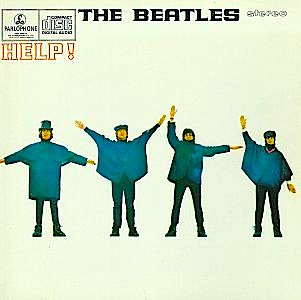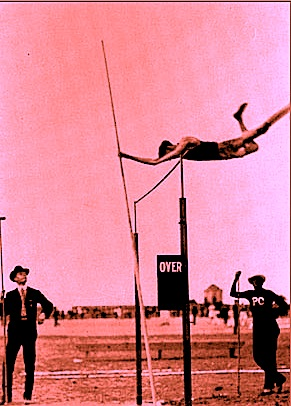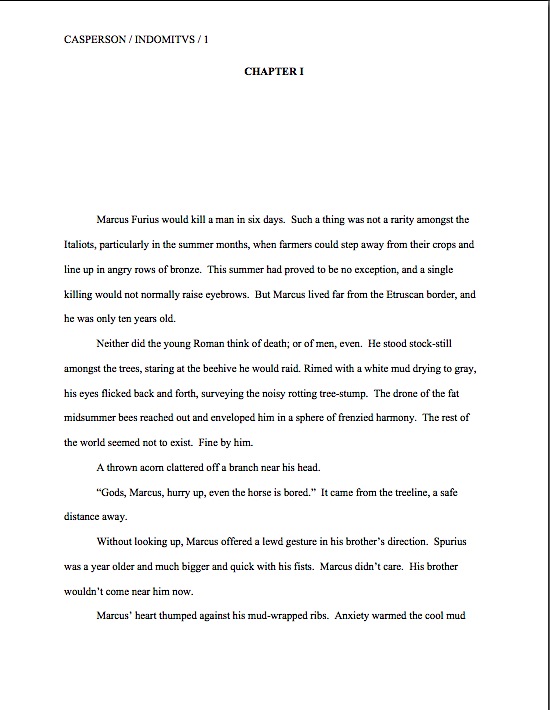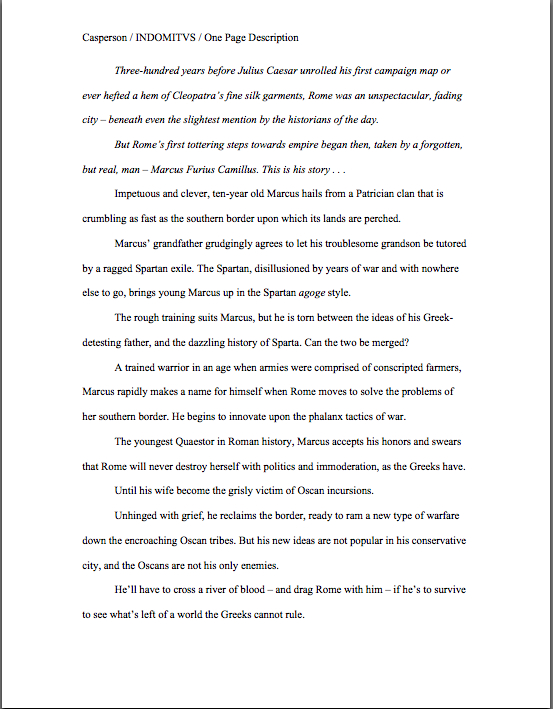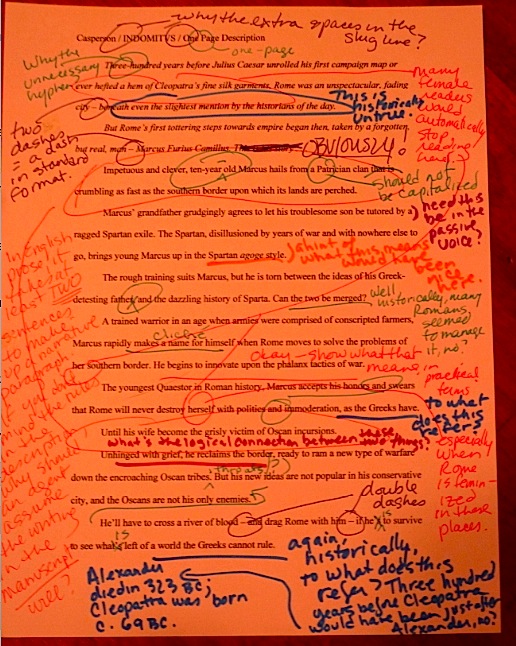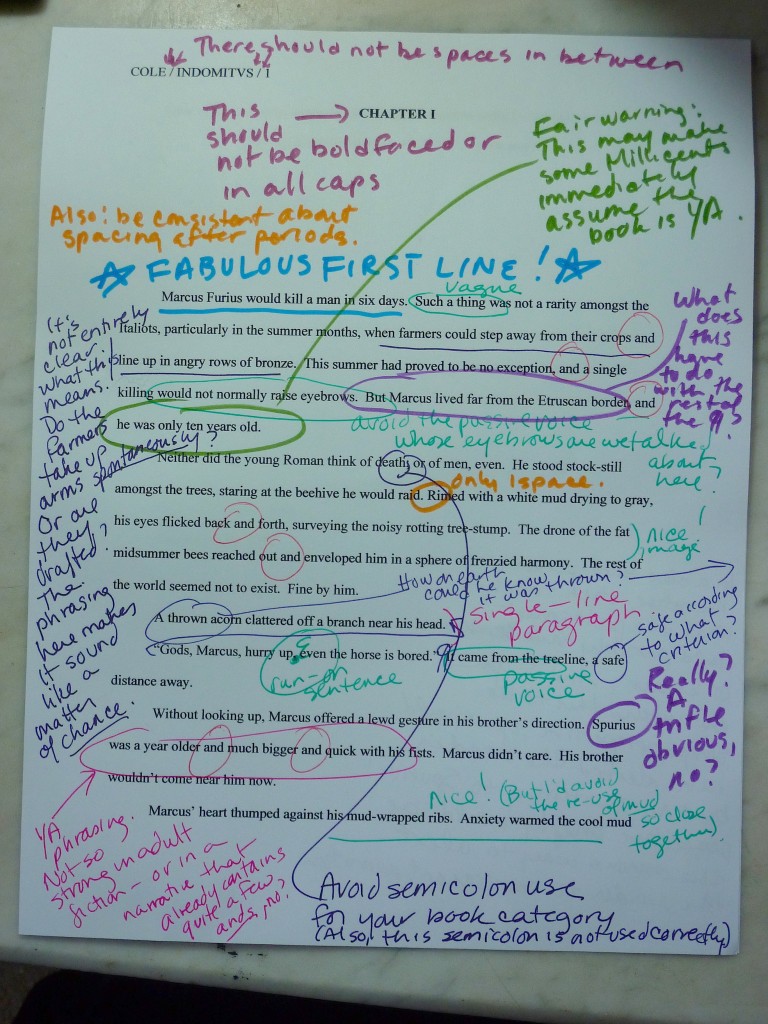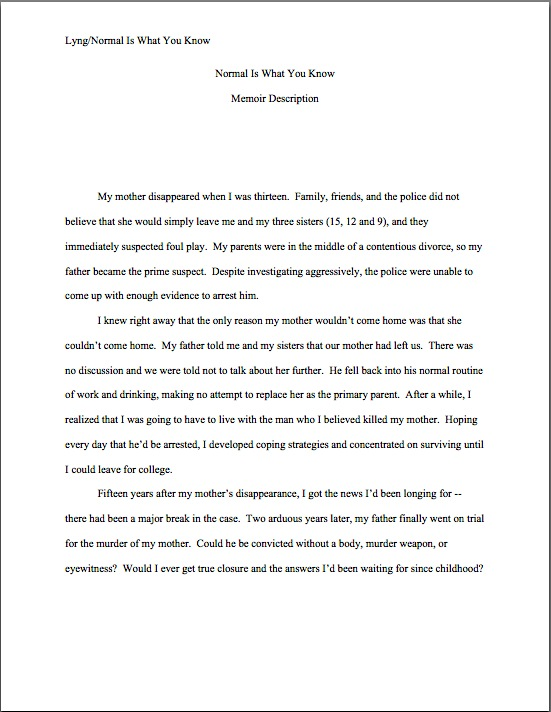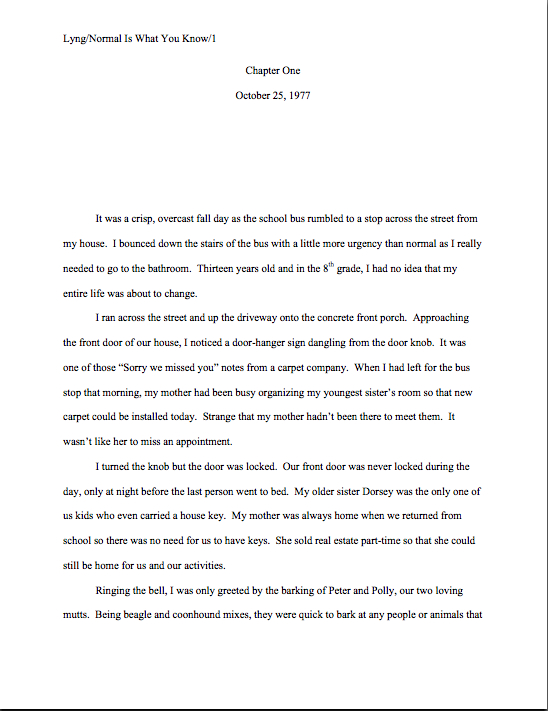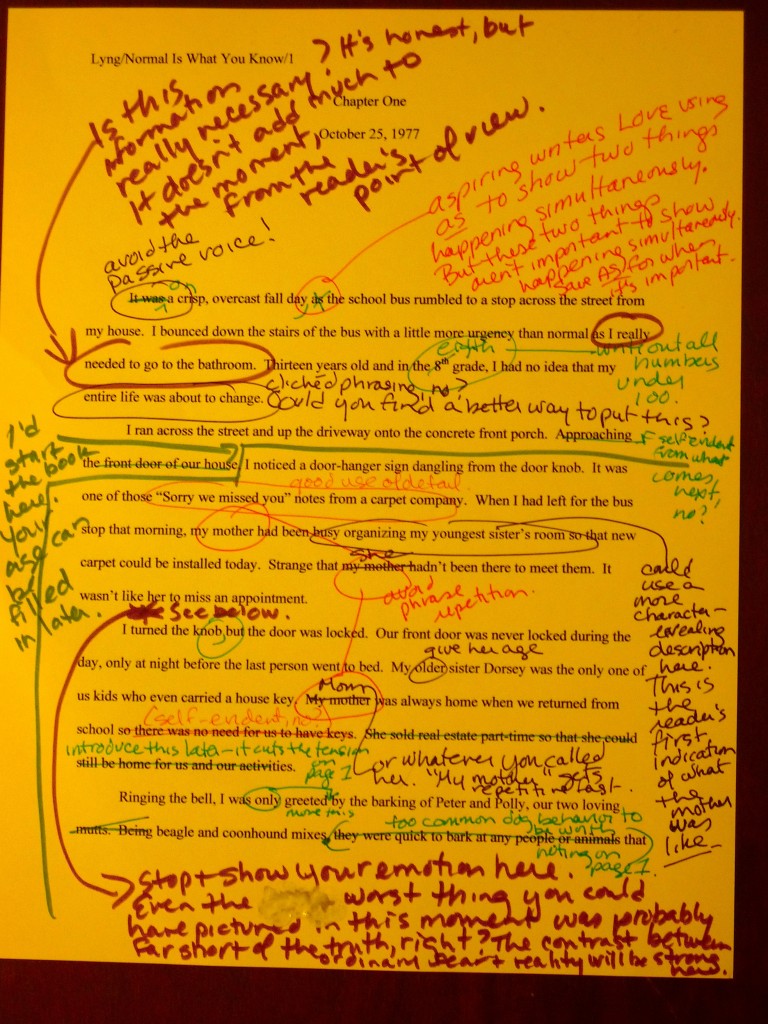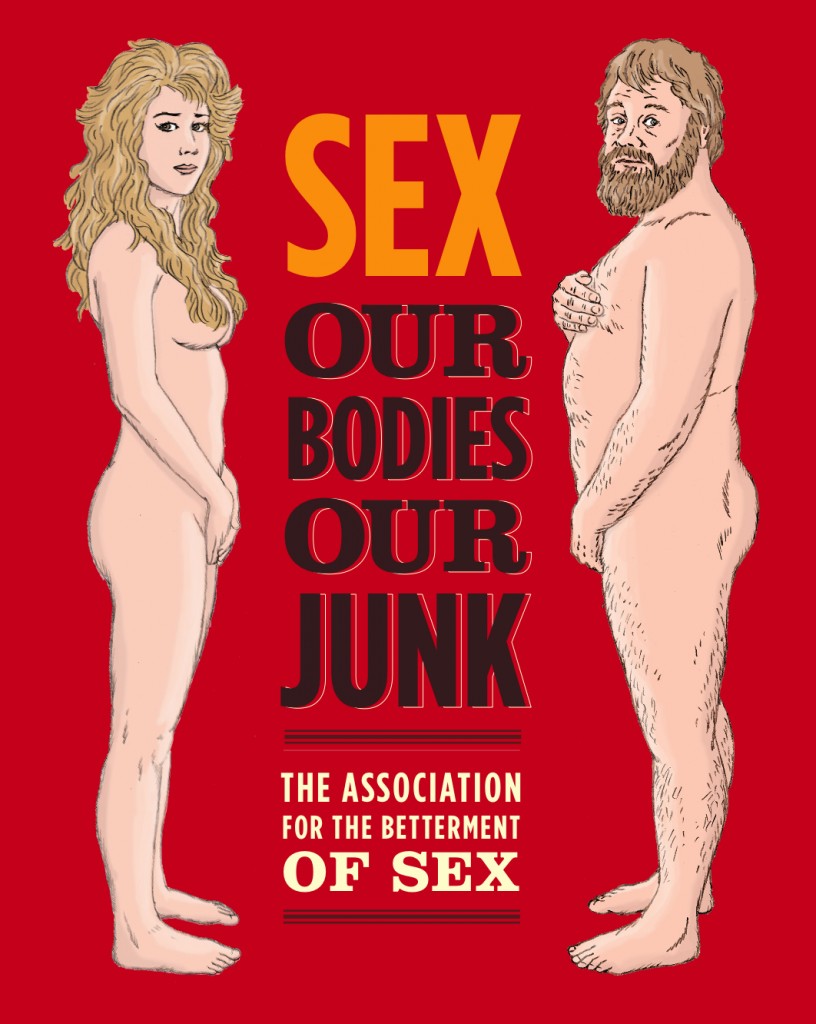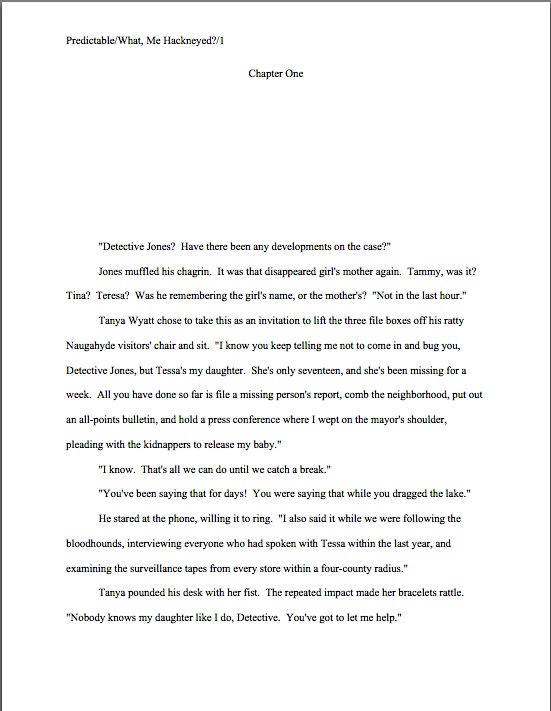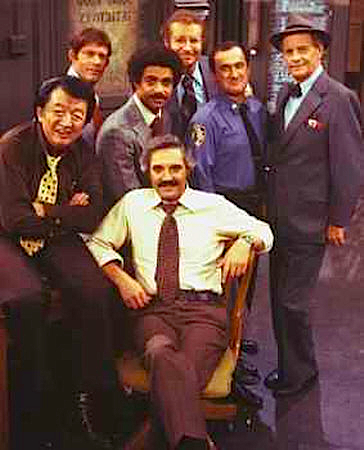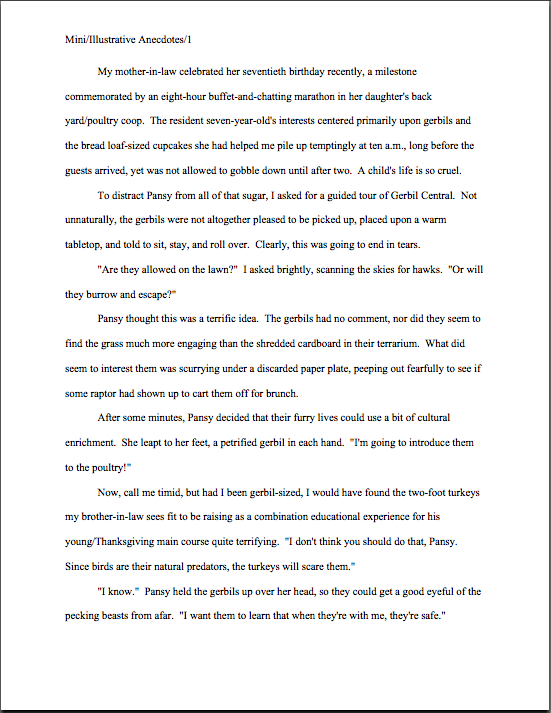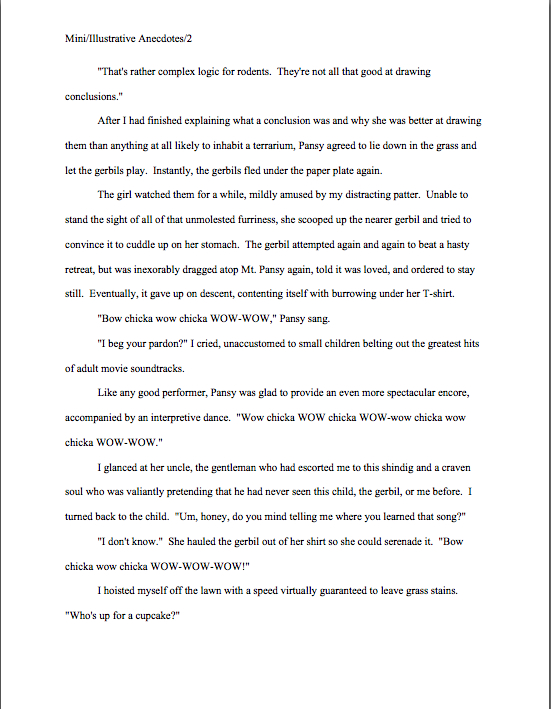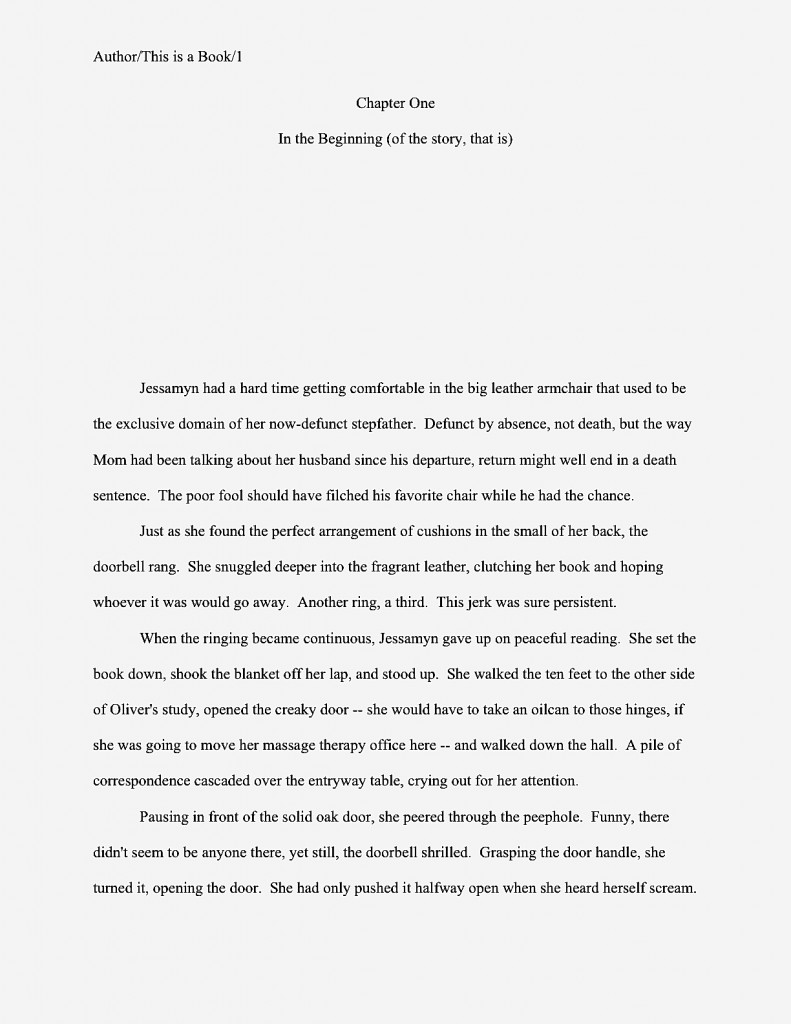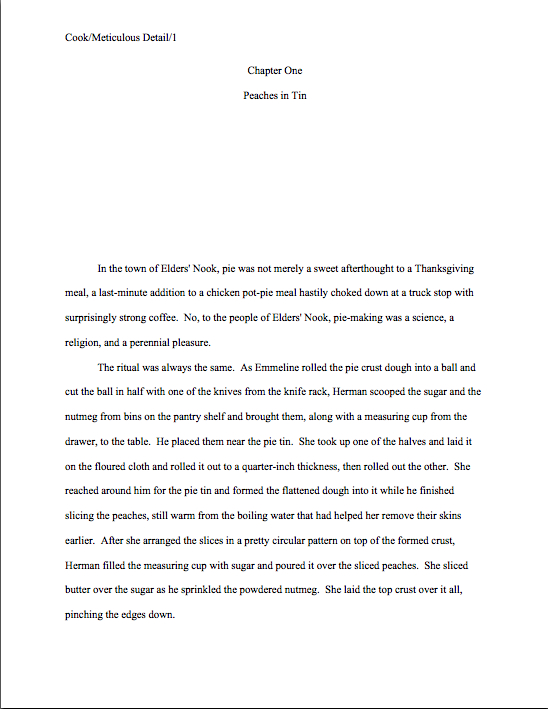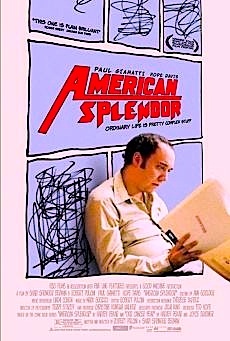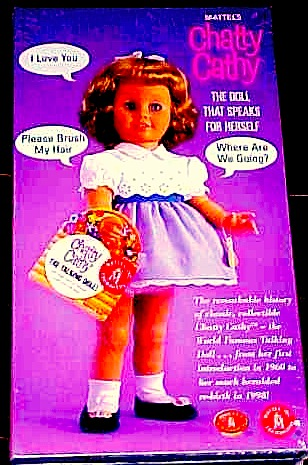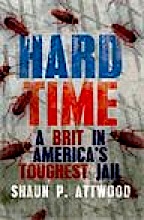Before we begin today, I have some delightful news to announce about a member of the Author! Author! community: Emily Breunig has just signed with fab agent Lindsay Edgecombe of Levine Greenberg! Congratulations, Emily, and welcome to the ranks of agented writers!
Her novel sounds like a hoot, too. Here’s how she described it in her query:
Will does not believe in an afterlife. Unfortunately, the afterlife seems to be fairly preoccupied with him. Shortly after his father’s death, Will moves to Shanghai to leave his old life behind. Two months into his new teaching job, Katherine Turner, his high school classmate, shows up. The only unusual thing is that she’s been dead for five years. She exists in a parallel Shanghai, a way station for wandering ghosts, and she wants Will’s help. He’d be ready to call the whole thing a hallucination, but she is eerily good at giving him accurate information about his family back home. That, and she’s seen his father. With this, Will steps into an alternate world that exists alongside the constantly changing cosmopolitan cacophony that is modern Shanghai. He is desperate to find his father, but ghosts like Katherine don’t allow the living into their space without exacting a price. A GHOST AT THE EDGE OF THE SEA is a portrait of a young expatriate trying to find his feet in a tumultuous city, in spite of his own tumultuous past.
I must admit, she had me at a parallel Shanghai. Well done, Emily, and I’m looking forward to announcing that your new agent has sold your book!
Back to the matter at hand. Have you been enjoying our foray into the niggling little manuscript elements that tend to irritate professional readers? We writing gurus tend to focus upon larger submission problems, the type of thing that might well get requested materials rejected on the spot. However, it doesn’t always take a single big mistake to trigger rejection: a series of tiny missteps can work just as well.
Especially if, like the gaffes I’ve been discussing in this series, they pop up so often in manuscripts that Millicent the agency screener wants to scream. Or at any rate, to read less charitably. Since the faux pas in this series are exceedingly common, the very sight of one of them — or, more commonly, many of them; like wolves, manuscript gaffes often travel in packs — might well be the final straw that sends her reaching for the form-letter rejection and shouting, “Next!”
Seem like an over-reaction? Not if it’s the 30th submission Millicent has seen in the last two hours that missteps within the same footprint. As much as each of us writers likes to think of our prose stylings as unique, certain catchphrases, clichés, and descriptive phrases turn up in almost everybody’s early drafts. So much so that it’s a shame, really, that so few aspiring writers have an opportunity to read other writer’s submissions; there’s nothing like reading the same phrase 75 times in a day to make one never want to read — or write — it again.
Why is that a problem in an otherwise well-written narrative? An over-reliance upon these phrases can water down individual authorial voice until it is practically inaudible.
Don’t believe me? Okay, let’s take another gander at what the pervasive reliance upon clichés and overused actions looks like in action. To render the example even more true to life, I’ll toss in a few other common gaffes as well. See if you can spot them.
“Yeah? I could care less.” Babette snatched the phone from its cradle before the end of the first ring. “Hello?” Rolling her eyes, she held up a finger at him. “Can you hold on a sec? I have to take this call.”
Pablo sighed, but he nodded. What had started out as a two-minute conversation was bidding fair to take up his entire afternoon. His time was valuable; he had things to do, places to go, people to meet.
Five minutes later, he was still tapping his foot impatiently and drumming his fingers on the marble tabletop. He waved his hand at her. “Babs?” he whispered, gesturing toward the clock. “I’ve got to get going.”
She nodded her head absently. Her loyal staff exchanged glances and smiled.
Resigned, he took a seat, shaking his head ruefully. Perhaps his time wasn’t as valuable as he had thought.
Now, there’s nothing technically wrong with any of these sentences, right? Admittedly, nodded her head and waved his hand are logically redundant, as nodding and waving generally involve the use of the head and the hand, respectively, but otherwise, there’s nothing that would necessarily strike an everyday reader as poorly written. It’s clear enough what’s going on, merely predicable and not that exciting.
It takes more than clarity to impress a professional reader, however. As we’ve seen in the last couple of posts, though, the fine folks who read manuscripts for a living — such as our old pals, Millicent the hardworking agency screener, Maury the literature-loving editorial assistant, and Mehitabel, the dedicated volunteer contest judge — read a whole lot more closely than other people. They also tend to make up their minds far more rapidly than other readers about whether a text has merit: if the first line on the page is well-written, they will move on to the second; if the second passes muster, then it’s on to the third. And so forth until either the story draws them in completely or they have already invested so much time in reading the manuscript that they start to look for reasons to accept it, rather than excuses to reject it.
Even if our example above had fallen late in a manuscript, it’s hard to imagine Millicent’s being able to come up with many reasons to be pleased. It’s stuffed to the gills with common actions and hackneyed phrases. None of them sufficient to trigger a “Next!” on its own, perhaps, but cumulatively, they smother the scene.
At minimum, they are distractions. Instead of being able to concentrate on the story or the characters, Millicent’s psyche is busy snapping out annoyed commentary. Let’s eavesdrop on her thoughts.
“Yeah? I could care less.” {She means she couldn’t care less, and this is a cliché.} Babette snatched the phone from its cradle before the end of the first ring. “Hello?” Rolling her eyes {Overused action.}, she held up a finger at him {Whose finger — her maid’s? Albert Einstein’s? A time-traveler from the year 4075? If it’s her finger, why not just say so?}. “Can you hold on a sec? {Stock phrase.} I have to take this call.” {And another.}
Pablo sighed {Overused action.}, but he nodded. {Ditto.} What had started out as a two-minute conversation was bidding fair to take up his entire afternoon. {Not a bad thought, but in the passive voice.}His time was valuable {Cliché.}; he had things to do {Cliché.}, places to go, people to meet. {And the third time’s a charm.}
Five minutes later, he was still tapping his foot impatiently {One of the two standard actions to indicate impatience}, and drumming his fingers {And here’s the other.}, on the marble tabletop. He waved his hand at her. {Overused action — and what would he be waving, other than his hand?}, “Babs?” he whispered, gesturing toward the grandfather clock. {A weak way to indicate that it’s in the room},”I’ve got to get going.” {Stock phrase.},
She nodded her head {As opposed to, say, nodding her Achilles tendon.} absently. Her loyal staff exchanged glances {Overused action.} and smiled. {And another. And heaven forfend that the narrative should not make me guess what the content of the thoughts these completely generic actions conveyed were…}
Resigned, he took a seat {Stock phrasing}, shaking his head {Overused action.} ruefully. Perhaps his time wasn’t as valuable as he had thought. {Kind of clever, but expressed in the passive voice.}
Ouch. Especially that comment in paragraph 3 about gesturing toward the grandfather clock being a weak way to show the reader that such an object is in the room. This is an editor-annoying tactic from way back: much as an inexperienced actor will point to physical objects on the set as he names them, writers new to the game will often depict their characters gesturing toward people or items in mid-dialogue.
Why is that problematic? Well, unless the object or person magically appeared second before the description, it’s seldom the most graceful way to work the information into the narrative. Nor is it particularly realistic. Generally speaking, people notice large objects when they first spot them, not at some undefined point later on.
Yet, as Millicent, Maury, and/or Mehitabel would be only to happy to tell you, scenes are often written as though even the most monumental portions of the scenery came panting up to the characters at the last possible moment, hastily flinging themselves into position just in time for a speaker to notice them. On the page, this phenomenon tends to look a little something like this:
“But Giséle,” Trevor whined, “we can’t turn back now. We’re almost there.”
She tossed her tempestuous red curls. “Where is there?”
He pointed to the Empire State Building, rising up out of the concrete before them. “Right here.”
Whoa — where did that gigantic edifice come from? Did Trevor tap the sidewalk with a magic wand while the reader wasn’t looking? Did he grow it from enchanted public monument beans?
Or — and this is what Millicent, Maury, and Mehitabel will simply assume is the case — did it simply not occur to the writer to show the building to the reader before it was absolutely necessary to the conversation to do so? Like, say, when it would have first come into view from the characters’ perspectives?
What might that look like on the page? Glad you asked. While I’m at it, I’m going to excise all of that long, red hair — buy Millicent a drink sometime and ask her to fill you in on just how high a percentage of novel heroines in submissions are tossing around long red or blonde hair.
Giséle’s four-inch heels were making each block seem like a marathon course. Was that the Empire State Building she saw looming ahead, or was she beginning to hallucinate?
She stopped dead before a seedy sidewalk café. The slanted writing on the chalkboard out front implied that the writer had lost the will to live in the middle of describing the day’s specials. “I have to stop. Let’s have some coffee.”
“But Giséle,” Trevor whined, “we’re almost there.”
See how much more natural that is? Not to mention establishing a better sense of place. In fact, I’m going to state this as a general narrative axiom: if it’s important to the scene that an object is in the general vicinity, why not just show it to the reader directly, rather than refer to it obliquely?
Actually, Millicent and Co. would have a pretty good idea why the writer didn’t choose to do that in the first version: like so many other fledgling writers, Trevor’s creator decided to have a character gesture at something big and obvious as an excuse to add a sentence indicating who was speaking. In today’s original example, if you’ll recall, the writer just went all-out and incorporated the object-identifying action into the tag line.
Five minutes later, he was still tapping his foot impatiently and drumming his fingers on the marble tabletop. He waved his hand at her. “Babs?” he whispered, gesturing toward the clock. “I’ve got to get going.”
If the reader already knows that the clock is in the room, that clumsy gesture becomes completely unnecessary. Actually, so does the tag line.
The gold-faced grandfather clock chimed six times. Fifteen minutes later, when it emitted a single ping, he was still drawing abstract shapes on the marble tabletop with his fingertip. “Babs? I’ve got to get going.”
Makes the point, doesn’t it, and in many fewer lines? This draft also helps establish the opulence of Babette’s home through the use of specific descriptive details: the gold on the clock, the marble on the table.
Relieved that our micro-revision is over? “Whew,” I hear some of you first draft-huggers murmuring, ” that was a whole lot of work for very few lines of dialogue. Still, I’m glad to know what the worst of Millicent, Maury, and Mehitabel’s wrath looks like.”
The worst, you say? Au contraire, revision-eschewers. Our original example above didn’t even come close to hitting the top of Millicent’s annoyance meter.
Just think of how much less she would have liked this excerpt had all of it been written in the passive voice, for instance, or, as is fairly common, if those overused actions had been happening closer together. Because I love you people, I shall spare you the sight of the former, but I can’t resist treating you to a sample of the latter. While I’m at it, I’m going to toss in some gratuitous word repetition and stir.
The phone rang. Babette snatched the phone from its cradle before the end of the first ring. “Hello?” Rolling her eyes and shaking her head, she held up a finger at him. “Can you hold on a sec? I have to take this call. Won’t take a second.”
What had started out as a two-minute conversation was bidding fair to take up his entire afternoon. Pablo sighed, arching an eyebrow at her rudeness, but he nodded, shrugging, to indicate that he was willing to hold on while she took the call.
Five minutes later, he was still tapping his foot impatiently, drumming his fingers on the marble tabletop, glancing repeatedly at his watch, and humming the theme to The Bridge over the River Kwai to pass the time. Still no sign that she was getting off the phone anytime soon.
Sighing, he waved his hand at her. “Babs?” he whispered.
She nodded absently, arching her brows at him. “Yes?”
He resisted an urge to roll his eyes. He glanced at his watch, tapping its face with his finger as he grimaced. “I’ve got to get going.”
Her brow furrowed, but she nodded her head absently and shrugged. Her loyal staff exchanged glances, rolling their eyes at one another as they smiled at his discomfiture.
Resigned, he pulled up a chair, took a seat, and sat down, shaking his head ruefully and rolling his eyes. Perhaps his time wasn’t as valuable as he had thought.
Quite a bit more annoying, if I do say so myself. A good two-thirds of that verbiage could go, with no cost to the reader’s sense of what is going on.
And don’t even get me started on the fact that if any of us saw a real-life Babette or Pablo engage in so much simultaneous eye-rolling, eyebrow-wiggling, head-bouncing, shoulder-shrugging, and glancing pointedly at things, we’d assume that the poor soul was suffering from a severe neurological disorder. In the quotidian world, most people don’t stop their interactions dead while they grimace and gesticulate.
To be fair, infecting the characters with St. Vitus’ dance was probably not the writer’s intent here. Most aspiring writers who depict such nervous-faced and (-torsoed) characters are simply trying to convey emotion non-verbally. But by piling on so many tics and gestures — ones that sometimes replicate the dialogue, rather than adding to it — the seemingly natural actions come across as unnatural levels of activity.
Which is the most serious problem here, right? Over-writing, over-explaining, and word and phrase redundancy are secondary irritants in this version. The primary problem is all of that frenetic movement. This is a scene about waiting, yet it’s hard to imagine more physical activity had all of the dialogue been conveyed with semaphore flags. Or via interpretive dance.
Not seeing the problem — or, more likely, are you so distracted by the hackneyed phrasing and word repetition that it’s hard to focus upon it? Millicent and her ilk would sympathize. Here’s that same passage again, winnowed down to just the actual movements.
The phone rang. Babette snatched the phone. She rolled her eyes. She shook her head. She held up a finger.
Pablo sighed. He arched an eyebrow. He nodded. He shrugged.
He tapped his foot impatiently (and continuously). He drummed his fingers on the table. He glanced repeatedly at his watch. He hummed.
He sighed. He waved. He whispered.
She nodded (immediately before saying, “Yes,” a bit of redundancy bound to annoy our Millie). She arched her brows.
He glanced at his watch. He tapped its face. He grimaced.
She furrowed her brow. She nodded. She shrugged. Her staff exchanged glances. They rolled their eyes. They smiled.
He pulled up a chair. He took a seat. He sat down. He shook his head. He rolled his eyes.
Quite a lot of activity for an ostensibly quiet scene, isn’t it? Most of these actions occur more than once, too. Yet all by themselves, how much of the core conflict of this scene do these actions actually demonstrate?
Not very much. Nor do these actions reveal much about Babette and Pablo’s personalities — as the fact that they both do some of the same things implies, these activities are not unusual. They appear in the text simply because they are things that a real person might do in this situation. Apparently, the writer is laboring under the pervasive misconception that the goal of an interactive scene is to list everything that the characters did, not to limit the narration and dialogue to only what will advance the plot, reveal character, or add conflict.
In fact, I can easily conceive of a version of this scene that contained none of these actions, and yet remained true to the original spirit of the exchange. Perhaps if I imagine it hard enough, it will appear on the screen below.
Babette snatched the phone from its cradle before the end of the first ring. “Hello?” After a moment’s hard listening, she mouthed at Pablo: “Don’t move.”
What had started out as a two-minute conversation was bidding fair to take up his entire afternoon. Irritably, he grabbed a random book from the leather-bound many gracing the glassed-in shelves: Tolstoy. The gold-faced grandfather clock chimed the hour, then the quarter hour.
Still no sign that she was getting off the phone anytime soon. Unless he was planning on finishing War and Peace, he needed to assert himself. “Babs?” he whispered. “I’ve got to get going.”
She tossed him a smile over her shoulder without interrupting her conversation. The parlormaid refilled his teacup, in recompense.
Perhaps his time wasn’t as valuable as he had been accustomed to think. He tried to immerse himself in the tribulations of the Russian nobility.
Gets the job done, doesn’t it? Of course, this is only one of endless possibilities — which only underscores Millicent’s essential objection to hackneyed phrasing and the overuse of a few everyday actions. It’s not merely that seeing the same actions and phrasing over and over again across many, many manuscript pages is rather boring. She’s also likely to be disappointed that the writer is not embracing the opportunity to use that valuable page space to demonstrate how his writing style, eye for telling details, and storytelling skills are different from every other writer’s who might care to submit to her boss.
Seriously, we professional readers are saddened by the sight of an original voice diluted by the mundane. Millicent, Maury, and Mehitabel, genuinely want to fall in love with a new writer’s voice, characters, and story, so when yet another manuscript appears on her desk where the writer’s voice is peppered with stock phrases, the characters do and say things that don’t demonstrate to the reader who they are, and dialogue and activity that appear simply because someone might conceivably say or do those things in that situation.
It’s the writer’s job not only to depict the world of the book believably, but enjoyably for the reader. Surprising the pros with original phrasing, unpredictable dialogue, and an appropriate level of activity for each scene is a far better means of achieving those laudable goals than just envisioning an interaction like a movie and providing a list of each motion, sound, and word the audience might see.
A simple waiting scene doesn’t need to be War and Peace, you know. As Mark Twain pointed out, “The difference between the right word and the almost right word is the difference between lightning and the lightning bug.” Be selective, and show Millicent, Maury, and Mehitabel how your voice and worldview are unique.
They are, aren’t they? Keep up the good work!
